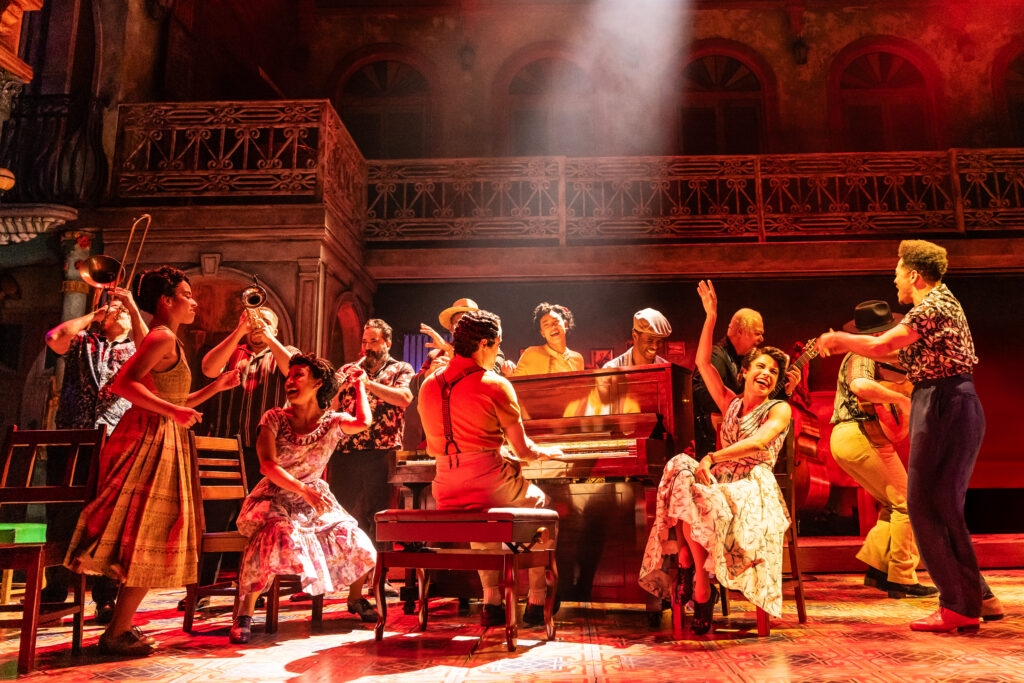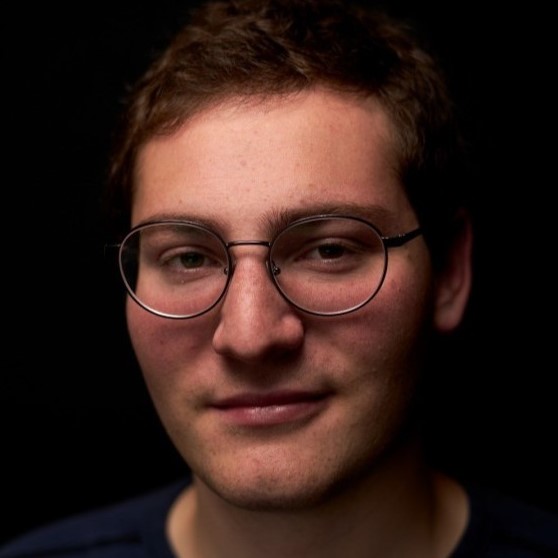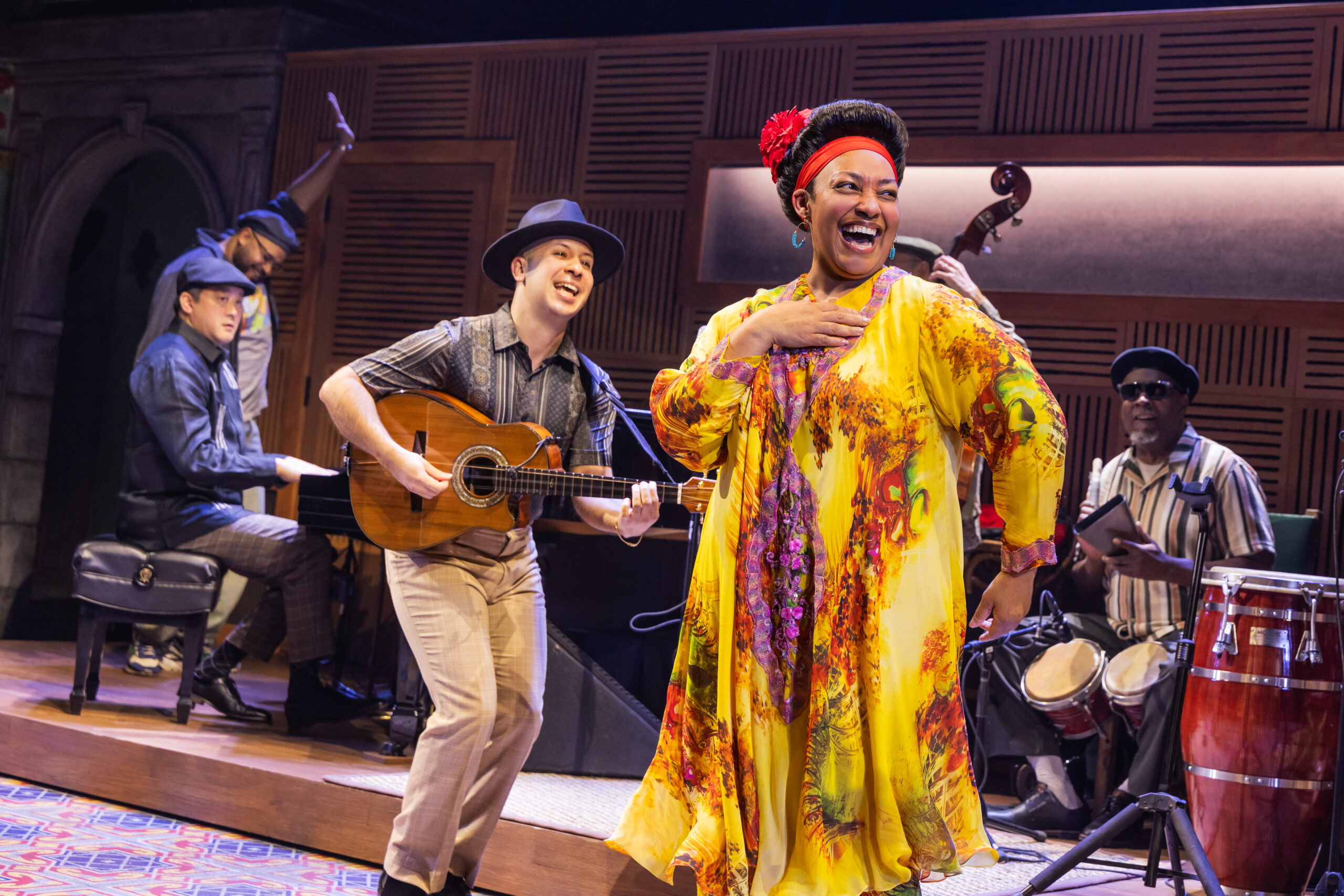Where was the Buena Vista social club?
Ever since the 1997 release of Buena Vista Social Club, the album of Cuban golden age music that went on to become the best-selling world music record of all time, a global spotlight has been placed on the 1940s-era music venue referred to in the album’s name (and in the name of the group of musicians recruited to put it together).
But in a 1999 documentary about the creation and reception of the album, locals struggled to agree on where, exactly, the long-defunct neighborhood club had been located, in pre-revolutionary Havana. Amid all the mythos and marketing, was it possible at all to put a pin on this iconic musical gathering place?
Well, the Buena Vista Social Club, for the time being, is at 45th Street and 8th Avenue in New York City, resurrected for audiences to enjoy on Broadway. A new musical, which opened on March 19, brings the classic album to life—and tells two stories. One is the tale of the American producers who came to the island in the 1990s to recruit and record all-star Cuban musicians performing standards of son cubano, guajira, bolero, and danzón. The other traces the origin stories of the players behind the collective moniker, as they pursued their musical dreams on an island on the cusp of revolution in the 1950s.
Buena Vista Social Club is the latest product of Broadway’s fervor for jukebox musicals—shows that use existing music, rather than original songs, as their score. Yet it represents something rare: Latin America has not often appeared on New York City’s Great White Way. The two most famous shows set there—Evita and Kiss of the Spider Woman—were written by gringos. Then, there is a slew of contemporary shows focused on Latinos and set mostly in the United States (think In The Heights or the recent musical about the life of Latin superstar Gloria Estefan).
Buena Vista Social Club, firmly planted in Havana and crafted by a team of Cubans and Cuban Americans, makes a rousing argument for why Latin America deserves a larger place in the musical theater pantheon, nearly blowing the roof off the Schoenfeld Theater. A nine-piece band of Cuban musicians play virtuosically and with a visible sense of enjoyment, earning mid-show ovations to solos on the tres, piano, and percussion. The singing soars too, adding Broadway brass to traditional boleros. If you come to the show looking for a live recreation of the famous album, Buena Vista Social Club won’t disappoint. It’s no wonder that at the end of the show it’s the band that gets the last bow.
The band, however, is not the protagonist of the musical. That’s Omara Portuondo, one of Buena Vista’s powerhouse singers—and the only woman in the ensemble. We follow Omara as she and her sister, singing in Cuba’s swanky nightclubs, seek the recording contract that will bring them stardom and, perhaps, to the United States. Instead, Omara falls in with the ragtag musicians who will become her bandmates in Buena Vista, at the social club itself—one of many integrated venues in the working-class barrios of Havana.

Taking liberties with the past
“Every Cuban Song Has a Story to Tell,” reads the cover of a booklet provided to the audience alongside their programs at the musical. But what story is Buena Vista Social Club trying to tell? The author of the musical’s dialogue, Marco Ramirez, admitted in an interview he took “many, many liberties in order to tell the best possible story.” That’s a tough choice for a musical based on real people. Many of the plot points around Omara, especially her relationships to Compay Segundo and Ibrahim Ferrer, are invented to tell stories of romance, integration, and exile—tales of Cuba.
A hunger for Cuban stories and culture were integral to the original album’s success. It came at a time of worldwide fascination with the small island at the end of the Cold War. Americans swooned at the images and sounds of Old Havana while expressing revulsion for the country’s politics. The musical cashes in on this nostalgia for pre-revolutionary Cuba with hazy sepia lighting, boho set design, and choreography that combines Latin dance with the dreamy gestures of ballet. The show feels not just like a throwback to the 1950s, but also to the 1990s, when the idea of Cuban cultural exchange was celebrated by both Washington and Havana. That feels dated against the backdrop of the Cuba of 2025, devastated by blackouts, led by an even-more entrenched regime, with the Obama-era rapprochement with the U.S. a distant memory.
The musical puts politics in the foreground, telling the audience that the Revolution made all Cubans choose whether to leave or stay. Its heroine, Omara, opted to stay, resisting the call of the United States, refusing to abandon her homeland’s music and her fellow musicians. Yet the musical’s climax happens when she performs at Carnegie Hall in New York City, a muddled and somewhat contradictory final note.
In the end, the audience is left facing a trap that might be inherent in the jukebox musical as a genre: As wonderful as the songs are, having been composed decades ago, they cannot tell the political story the musical wants to tell.






